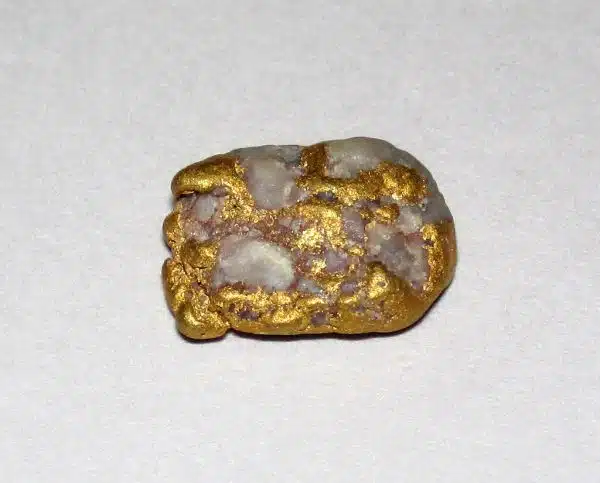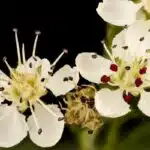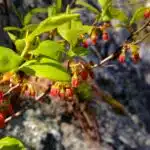Black Hills Spruce is a popular evergreen tree known for its dense foliage and conical shape. This species of spruce is native to the Black Hills region of South Dakota, Wyoming, and Montana, hence the name. It is a hardy tree that can withstand harsh weather conditions and grow in various soil types.
As an arborist, it is essential to have a thorough understanding of the growth patterns and requirements of Black Hills Spruce. Proper care and maintenance are crucial to ensure that this tree thrives in its environment. In this article, we will discuss how to grow and care for Black Hills Spruce, including planting tips, watering and fertilizing requirements, pruning techniques, common pests and diseases to watch out for, and more. Whether you are a homeowner looking to add some greenery to your landscape or a landscaper seeking advice on caring for trees in your clients’ yards, this guide will provide you with valuable insights on cultivating healthy Black Hills Spruce trees.
Characteristics Of Black Hills Spruce
Often referred to as “Picea glauca var. densata,” Black Hills Spruce is a species of spruce tree that shares many similarities with other spruce varieties. Its conical shape, needle-like leaves, and ability to grow in cold climates make it a popular choice among gardeners and landscapers alike.
One of the benefits of planting black hills spruce is its resilience in harsh conditions. This tree can tolerate extreme cold, heat, drought, and even poor soil conditions. Additionally, it grows relatively fast, typically reaching a height of 30-40 feet within 20 years.
However, there are drawbacks to consider when deciding whether to plant black hills spruce. For one, this species is susceptible to pests and diseases such as spider mites and needle cast. Additionally, while it may be able to tolerate poor soil conditions, it thrives best in well-drained soil with a slightly acidic pH level. When compared with other spruce varieties such as Norway Spruce or White Spruce, Black Hills Spruce stands out for its unique characteristics while still offering many of the same benefits.
When choosing the right location for planting Black Hills Spruce trees, it’s important to consider several factors. The ideal spot will receive plenty of sunlight but also provide some shade during hot summer afternoons. It should also have well-draining soil that is not too wet or prone to flooding. By selecting the appropriate site and providing proper care throughout their growth period, you can enjoy the beauty and benefits of these majestic trees for years to come.
Choosing The Right Location For Planting
To ensure the proper growth and development of your black hills spruce, it is important to choose the right location for planting. The ideal conditions for this species are in areas with well-draining soil, moderate moisture levels, and good air circulation. In addition, black hills spruce requires full sun exposure for optimal growth.
When selecting a location to plant your black hills spruce, consider the amount of sunlight the area receives throughout the day. This species thrives in areas that receive full sun exposure, meaning at least six hours of direct sunlight each day. Avoid planting in areas with partial shade or full shade as this can lead to stunted growth and a weakened tree structure.
It is also important to consider the surrounding environment when choosing a location for planting. Black hills spruce should be planted in an area with good air circulation to prevent fungal diseases from developing. Avoid planting too close to buildings or other trees that may block airflow. By carefully selecting an appropriate location for planting, you can provide your black hills spruce with the ideal conditions it needs to thrive and grow into a healthy tree.
To ensure optimal growth of your black hills spruce, it is important to consider both its ideal sun exposure and surrounding environment when choosing a location for planting. However, these factors alone are not enough to guarantee healthy growth and development of this species. The next step is understanding soil requirements for optimal growth which will be discussed in the subsequent section.
Soil Requirements For Optimal Growth
After carefully selecting the perfect location for planting your black hills spruce, it’s time to focus on the soil requirements. Like any living organism, spruce trees require a suitable environment for optimal growth and development. Soil testing is an essential step in determining the quality of your soil and identifying its deficiencies.
To ensure the best possible growth for your black hills spruce, soil amendment is often necessary. This process involves adding organic matter or other supplements to improve the soil’s structure, nutrient content, and water-holding capacity. Compost, manure, or peat moss are examples of organic matter that can be added to improve soil fertility.
Here are three things you need to keep in mind when amending the soil for your black hills spruce:
- Choose organic materials that are locally sourced and free from contaminants.
- Mix amendments into the top 6-8 inches of soil before planting.
- Follow recommended application rates based on the results of your soil test.
Preparing the site for planting requires careful attention to detail and a willingness to invest in your tree’s future growth. By ensuring proper soil preparation through testing and amendment, you can give your black hills spruce a solid foundation to thrive in its new home.
Preparing The Site For Planting
When selecting the planting site for a black hills spruce, it is important to consider the tree’s mature size, as well as the site’s soil quality, drainage, sunlight, and available irrigation.
To dig the hole for planting, the depth should be two times the diameter of the root ball. This will help ensure that the tree is planted at the same depth it was grown in the nursery.
The width of the hole should be two to three times the diameter of the root ball. This will provide enough space for the roots to spread out and grow.
The soil removed from the planting hole should be amended with organic matter, such as compost or peat moss. This will help improve the soil’s fertility and water-holding capacity.
Fertilizing the soil prior to planting is not usually necessary for black hills spruce. However, if the soil is poor, a slow-release, balanced fertilizer can be applied at planting time.
After planting, the tree should be watered thoroughly to ensure proper establishment. The soil should be kept moist, but not soggy, for the first few weeks.
Choosing The Site
The success of any black hills spruce plantation heavily depends on the site selection. Proper site selection is a key factor in maximizing tree growth and survival. Therefore, it is important to choose an appropriate site for planting these trees. Site selection should be based on factors such as soil type, drainage, topography, and exposure to wind and sun.
When it comes to soil type, black hills spruce thrives in well-drained soils that are rich in organic matter. The ideal pH range for these trees is between 5.0 and 7.5. Additionally, the site should have good air circulation to prevent fungal diseases from setting in. When it comes to climate considerations, black hills spruce can tolerate a wide range of temperatures but prefers cool and moist conditions.
Lastly, the location should also be favorable for maximum light exposure since adequate sunlight is crucial for photosynthesis, which supports healthy growth of the tree’s crown. By choosing a good location for planting black hills spruce trees, you will create optimal conditions for their growth and ensure they thrive over time.
Digging The Hole
Preparing the site for planting is a crucial step in ensuring the success of any tree plantation. Once you have selected an appropriate location, the next step is to dig the hole where your black hills spruce tree will be planted. One of the most important factors to consider when digging a hole is its proper depth.
The hole’s depth should be equal to or slightly shallower than the length of the root ball. This ensures that the roots are neither too deep nor too shallow, which can hinder their growth and development. Proper depth also helps prevent waterlogging and root rot, which can occur when trees are planted too deeply.
After digging the hole, it’s essential to backfill properly. Backfilling involves replacing soil around the tree’s roots, ensuring that there are no air pockets left behind. Air pockets can cause root dryness and limit their ability to absorb moisture and nutrients from the soil. Therefore, it’s crucial to tamp down on each layer of soil added during backfilling to ensure proper compaction and eliminate air pockets. By following these guidelines for proper depth and backfilling techniques, you’ll create an optimal environment for your black hills spruce tree’s healthy growth and longevity.
Fertilizing The Soil
Proper site preparation is key to the success of any tree plantation. Aside from selecting an appropriate location and digging the hole at the proper depth, it’s also essential to consider fertilizing the soil. Fertilizers are vital in providing trees with the necessary nutrients they need for healthy growth and development.
There are different types of fertilizers available, such as organic and inorganic. Organic fertilizers come from natural sources like compost, animal manure, and bone meal. Inorganic or synthetic fertilizers, on the other hand, are commercially produced and contain specific nutrient ratios that can be customized depending on a tree’s needs. The frequency of fertilization depends on various factors like soil type, climate conditions, and tree species.
Fertilizer application should be done during planting or immediately after planting to promote root growth. Subsequent applications may follow annually or every few years. Over-fertilization can harm trees by causing excess salts to accumulate in the soil, leading to root burn or death. Therefore, it’s crucial to carefully read the manufacturer’s instructions for recommended dosage and application methods before using any fertilizer product. By carefully considering fertilization practices during site preparation for planting your black hills spruce tree, you’ll ensure its long-term health and vitality.
Digging The Hole And Planting The Tree
When it comes to planting a black hills spruce, the proper hole dimensions are crucial for healthy growth. The hole should be dug two times wider than the width of the root ball and just as deep as the root ball’s height. This allows enough room for the roots to grow outwards and downwards without being cramped or exposed to air. Additionally, it is important to remove any grass or weeds within a 3-foot radius of where the tree will be planted.
Once you have dug the proper sized hole, it’s time to plant your black hills spruce using tree planting techniques that ensure its success. First, place the tree in the center of the hole, making sure that it is straight and not leaning in any direction. Next, backfill with soil, tamping down gently as you go to avoid air pockets. Finally, water thoroughly to settle the soil and help eliminate any remaining air pockets.
By following these proper hole dimensions and tree planting techniques, you can give your black hills spruce a great start towards healthy growth. In order to continue this growth, it is important to understand how watering techniques play an important role in maintaining a healthy tree.
Watering Techniques For Healthy Growth
Frequent watering is necessary to ensure healthy growth in black hills spruce, as it provides the tree with essential nutrients and moisture. However, it is important to ensure that the soil is not over-saturated, and that the water is not being wasted. Deep root hydration is an important technique to consider, as it encourages healthy root growth, which gives the tree access to more water and nutrients as it grows. By providing deep root hydration, black hills spruce is able to withstand more extreme weather conditions and become stronger, more resilient trees.
Frequent Watering
As an arborist, I have seen countless cases of unhealthy trees due to improper watering techniques. One of the most crucial aspects of growing and caring for black hills spruce is frequent watering. Watering frequency should be based on soil moisture levels rather than a set schedule.
Monitoring soil moisture levels can be done by inserting a screwdriver or other sharp object into the ground. If it easily penetrates the soil, then the soil is moist enough; if not, it’s time to water. It’s important to note that overwatering can be just as damaging as underwatering, so pay attention to the soil moisture level before watering.
During hot summer months, black hills spruce may require more frequent watering than during cooler seasons. In general, it’s recommended to water deeply once a week rather than lightly every day. This allows water to penetrate deeper into the roots and encourages healthy growth. Proper watering techniques are essential for maintaining healthy black hills spruce trees that will thrive for years to come.
Deep Root Hydration
Watering is an essential aspect of tree care that should never be overlooked. Proper watering techniques ensure the healthy growth and development of trees, including black hills spruce. In addition to monitoring soil moisture levels, deep root hydration is another critical aspect of watering that arborists and tree care specialists must pay attention to.
Deep root hydration involves applying water directly to the roots of the tree using specialized equipment designed to penetrate the soil deeply. This technique allows water to reach the deepest roots of the tree, where it’s needed most. Deep root hydration is especially important for black hills spruce trees because they have a shallow root system that requires frequent and thorough watering.
Another factor that contributes to healthy growth in black hills spruce trees is proper drainage. Poor drainage can lead to waterlogging, which suffocates roots and can cause root rot. To avoid this problem, it’s essential to ensure that the soil around your black hills spruce has proper drainage. Additionally, deep root fertilization can further enhance the health and growth of your black hills spruce by providing nutrients directly to its roots.
In conclusion, deep root hydration and proper drainage are crucial aspects of watering techniques for maintaining healthy black hills spruce trees. Arborists and tree care specialists should pay close attention to these factors when caring for these beautiful trees. By doing so, they can ensure that their clients’ trees remain strong, healthy, and vibrant for years to come.
Fertilizing Requirements For Black Hills Spruce
As with any plant, it is crucial to provide the right nutrients to ensure healthy growth and development. When it comes to black hills spruce trees, the best fertilizers are those that contain nitrogen, phosphorus, and potassium in a balanced ratio. The timing of application is also essential as over-fertilization can do more harm than good. It is recommended to apply fertilizer once in early spring and again in late fall when the tree is dormant.
One of the most common mistakes made when fertilizing black hills spruce trees is using too much fertilizer or applying it at the wrong time. Over-fertilizing can lead to excessive growth, which weakens the tree’s structure and makes it more susceptible to diseases and pests. On the other hand, under-fertilization can lead to stunted growth or even death. To avoid these problems, always follow the recommended dosage on the package and apply fertilizer during the appropriate time of year.
Organic options for fertilizing black hills spruce trees include compost or well-rotted manure. These products not only provide nutrients but also improve soil structure and promote beneficial microorganisms. Another option is liquid fertilizer, which can be absorbed quickly by the tree’s roots. However, some arborists argue that granular fertilizer is better as it releases nutrients slowly over time, providing a continuous supply throughout the growing season.
In addition to fertilizing, mulching is another essential aspect of caring for black hills spruce trees. Mulch helps retain moisture in the soil while also suppressing weeds that compete with the tree for resources. In our next section, we will discuss how to properly mulch your black hills spruce tree for optimal health and growth.
Mulching For Moisture Retention And Weed Control
As the Black Hills spruce grows, it is essential to ensure that the soil remains moist and free from weeds. Mulching is the perfect solution for maintaining these conditions. A layer of mulch around the base of your spruce tree helps retain moisture while also suppressing weed growth.
Mulching benefits go beyond just moisture retention and weed control. It also moderates soil temperatures, regulates nutrient levels, and improves soil structure as it decomposes over time. In addition, mulch provides a protective barrier against physical damage caused by lawn mowers or other gardening tools.
Types of mulch vary widely, but organic options like wood chips or bark are great for improving soil health while inorganic options like rocks or gravel offer an attractive aesthetic while still providing the same benefits. When applying mulch, be sure to spread it evenly around the base of your Black Hills spruce tree in a layer about two to four inches deep.
Mulching is an integral component of proper Black Hills spruce tree care. Not only does it help retain moisture and control weeds, but it also provides numerous additional benefits for overall tree health. In our next section, we will discuss pruning techniques for shape and health that will further aid in maintaining a beautiful and healthy Black Hills spruce tree.
Pruning Techniques For Shape And Health
Pruning Frequency of a black hills spruce is recommended to occur at least once a year to maintain shape and health. When pruning, the best method to use is selective pruning, as it helps to maintain the natural shape of the tree. Removal of dead branches is also necessary to promote air circulation and prevent the spread of disease. It is important to ensure the dead branches are removed properly, as improper removal can leave jagged edges that can cause further damage. As a tree care specialist, it is recommended to use pruning shears or saws to ensure clean cuts and maintain the health of the tree. Finally, when pruning a black hills spruce, it is important to avoid pruning too much, as it can cause the tree to become weak and vulnerable to disease.
Pruning Frequency
Pruning techniques are essential in maintaining the health and shape of a black hills spruce. Pruning is the process of removing branches, limbs, or other parts of the tree that are either dead, damaged or diseased. Proper pruning techniques can help prevent diseases from spreading throughout the tree and promote healthy growth. However, improper pruning can harm the tree and cause long-term damage. As an arborist or tree care specialist, it is imperative to understand the timing of pruning and how often it should be done.
The frequency of pruning depends on several factors such as the age of the tree, its growth rate, and its desired shape. For younger black hills spruce trees, pruning should be done every year to encourage healthy growth and remove any dead or diseased branches. When the tree reaches maturity, pruning may not be necessary as frequently unless there is an issue with disease or pests. It’s important to know that over-pruning can stunt a tree’s growth and reduce its overall health.
Timing is also critical when it comes to pruning black hills spruce trees. Pruning in late winter or early spring before new growth starts is typically recommended because it allows you to see the full structure of the tree before leaves start growing in. Pruning during this time also helps minimize damage to new growth that could occur during other times of the year. In conclusion, understanding proper pruning techniques for shape and health involves knowing when and how often to prune a black hills spruce. By following these guidelines, you can ensure your trees remain healthy for years to come.
Pruning Methods
Pruning techniques are crucial in maintaining the shape and health of a black hills spruce. In addition to promoting healthy growth, pruning also enhances the tree’s aesthetic appeal. There are various pruning methods that arborists or tree care specialists can utilize to achieve optimal results.
One common method is crown cleaning, which involves removing dead, damaged or diseased branches from the canopy of the tree. Crown thinning is another technique that entails selectively removing small branches throughout the canopy to reduce its density. This method helps improve air circulation and sunlight penetration while reducing wind resistance.
Another pruning method is crown reduction, which is used to reduce the size of a tree. This technique involves cutting back larger limbs and branches to maintain a desirable size and shape without compromising the overall health of the tree. Proper pruning techniques offer several benefits such as prolonging tree life by removing dead or diseased wood, improving structural integrity, enhancing aesthetics and improving property values.
In conclusion, employing appropriate pruning techniques for shape and health involves understanding different methods like crown cleaning, thinning, and reduction. Arborists or tree care specialists must consider factors such as timing and frequency when implementing these techniques to ensure optimal results. By applying these practices effectively, they can help maintain healthy trees that add value to their environment while serving others’ needs.
Dead-Branch Removal
Pruning techniques are essential in promoting the health and appearance of a black hills spruce. One of the vital methods that arborists or tree care specialists use is dead-branch removal. Dead branches may pose a risk to people, property, and the tree itself, making it necessary to eliminate them promptly. The frequency of pruning for dead-branch removal depends on various factors, such as the age and size of the tree, site conditions, and pest and disease prevalence.
Tools needed for dead-branch removal include pruning shears, loppers, hand saws or chainsaws. Pruning shears are used to remove smaller branches up to 1/2 inch in diameter while loppers cut branches with diameters ranging from 1/2 inch up to 2 inches. Hand saws are best suited for removing larger limbs up to 4 inches in diameter while chainsaws can be used for thicker branches. It’s important to sterilize cutting tools between cuts by dipping them into a solution of water mixed with bleach or alcohol.
In summary, dead-branch removal is an essential aspect of pruning techniques that promotes the shape and health of a black hills spruce. The frequency at which this technique should be applied varies depending on several factors such as site conditions and pest prevalence. Proper tools such as pruning shears, loppers, hand saws or chainsaws must be used when carrying out this task while observing proper hygiene practices like sterilizing cutting tools between cuts.
Common Pests And Diseases To Watch Out For
Black Hills spruce is a hardy tree species that can tolerate a range of growing conditions. However, like any plant, it is susceptible to pests and diseases that can affect its growth and health. As such, it is important for growers to be vigilant in monitoring their trees for any signs of infestations or illnesses.
One of the most common pests that affect Black Hills spruce is spider mites. These tiny arachnids feed on the sap of the tree, causing yellowing and browning of the needles. To prevent an infestation, growers should ensure their trees are well-watered and fertilized as healthy trees are less likely to attract mites. Additionally, regular pruning and removal of any dead or diseased branches will help maintain good air circulation around the tree.
Another pest that can cause damage to Black Hills spruce is the spruce gall aphid. These insects create galls (abnormal growths) on the branches which can weaken the tree’s structure over time. Preventative measures include removing affected branches as soon as possible, spraying with insecticidal soap or horticultural oil, and introducing natural predators such as ladybugs or lacewings into the surrounding ecosystem.
In conclusion, being proactive in preventing pest infestations and disease outbreaks is key to maintaining healthy Black Hills spruce trees. Natural remedies such as insecticidal soap or horticultural oil can be effective in treating minor infestations while introducing natural predators can help keep populations under control. The next section will focus on identifying and treating pest infestations in more detail.
Identifying And Treating Pest Infestations
Black Hills spruce trees are known for their hardiness and resistance to pests. However, even the healthiest of trees can be affected by common pest infestations. Some of the most common pests that affect Black Hills spruce trees include spider mites, aphids, and sawflies. These pests feed on the needles and sap of the tree, which can lead to discoloration and damage.
Prevention is key when it comes to pest infestations in Black Hills spruce trees. Regularly inspecting your tree for signs of infestation is important so that you can catch any problems early on. One effective prevention technique is to keep your tree healthy by providing it with adequate water, mulch, and nutrients. Another method is to introduce natural predators such as ladybugs or lacewings that feed on harmful insects.
If you suspect that your Black Hills spruce tree is suffering from a pest problem, it’s important to take action quickly before the damage becomes irreversible. There are several treatment options available depending on the severity of the infestation. Insecticides can be used for severe infestations, but it’s important to use them with caution as they can harm beneficial insects as well. Pruning affected branches or using a strong blast of water can also help remove pests from your tree.
Identifying and treating pest infestations in Black Hills spruce trees is crucial for maintaining their health and beauty. By taking preventative measures and acting quickly if an infestation occurs, you can ensure that your tree remains strong and resistant to future problems. In the next section, we will explore how to diagnose and treat common diseases affecting Black Hills spruce trees.
Diagnosing And Treating Common Diseases
Identifying and treating pest infestations is crucial to the health of your black hills spruce, but it’s not the only concern. Just like any living being, your tree can also suffer from diseases. These diseases can range from root rot to needlecast, and they can be caused by fungi or bacteria. While identifying these issues can be challenging, there are preventive measures that you can take to keep your black hills spruce healthy.
One way to prevent disease is through proper care of your tree. Make sure that you’re watering it regularly, but not too much. Too much water can lead to root rot, while too little water can cause drought stress. Additionally, ensure that the soil around your tree is well-draining and aerated. This will help prevent fungal growth in the roots.
If you do notice signs of disease on your black hills spruce, there are natural remedies that you can use instead of harsh chemicals. For instance, spraying a mixture of water and neem oil on affected areas can prevent fungal growth. You can also try pruning away dead or infected branches to stop the spread of disease. Remember that prevention is always better than cure when it comes to caring for your black hills spruce.
Moving forward with winter care and protection for your black hills spruce requires attention to detail in order to maintain its health throughout the colder season.
Winter Care And Protection
During the winter months, it is essential to protect your black hills spruce from harsh weather conditions. Insulating the branches of the tree can prevent damage from snow and ice. To do this, wrap the branches with burlap, starting at the bottom and working your way up to the top of the tree. This will create a protective barrier that will shield the tree from excessive cold and wind.
In addition to insulating the branches, it is also important to protect the trunk of the tree. One effective method for doing this is to wrap it with burlap as well. This will help prevent sunscald, which occurs when there is a sudden change in temperature between daytime sun exposure and nighttime freezing temperatures. Sunscald can cause bark cracking and lead to damage or death of the tree.
Protecting your black hills spruce during winter months will help ensure its health and longevity. By insulating branches and trunk with burlap, you can prevent damage from harsh weather conditions such as snow, ice, wind, and sunscald. With proper care, your black hills spruce will thrive as a beautiful landscape tree for years to come.
Black Hills Spruce As A Landscape Tree
Black Hills spruce is a popular landscape tree, known for its dense and pyramidal shape. It can be used as a focal point or as a screen to provide privacy. This tree can grow up to 60 feet tall in the right conditions and has a moderate growth rate of about 12 inches per year. It is hardy in USDA zones 3-7, making it an excellent choice for colder regions.
Design ideas: Black Hills spruce can be used as an accent tree or planted in rows to create a natural windbreak. Its dark green foliage provides a beautiful backdrop for other plants and flowers, especially those with bright colors. Due to its conical shape, it looks great when lit up at night, adding an element of beauty to your landscape even after the sun goes down.
Maintenance tips: Black Hills spruce requires full sun exposure and well-drained soil that is slightly acidic. It does not tolerate wet soils or standing water, which may cause root rot. Mulching around the base of the tree will help retain moisture and suppress weeds. Pruning should be done in late winter or early spring before new growth appears to maintain its shape and remove any dead or damaged branches.
In conclusion, Black Hills spruce is an ideal choice for homeowners who want to add beauty and value to their landscapes. With proper care and maintenance, this tree can thrive for many years, providing shade, privacy, and aesthetic appeal. For best results, consult with an arborist or tree care specialist who can recommend specific practices tailored to your location and individual needs.
Conclusion And Final Tips
Maintaining healthy and vibrant Black Hills Spruce trees is a rewarding experience. To ensure the long-term success of your spruce, it is important to keep up with regular maintenance practices. One key tip for maintenance is to be vigilant in monitoring for pests or disease. Early detection can prevent significant damage to the tree and prolong its life.
Another essential aspect of maintaining Black Hills Spruce trees is proper planting techniques. The best time to plant these trees is in the fall, which allows them ample time to establish themselves before winter. When planting, ensure that the hole is deep enough to accommodate the entire root ball and that the soil is well-drained. It is also beneficial to add organic matter such as compost or peat moss to improve soil quality.
In addition to pest control and proper planting techniques, consistent watering and fertilization are crucial for optimal growth and health of Black Hills Spruce trees. Watering should be done deeply but infrequently, allowing the soil time to dry out between waterings. Fertilization should be done annually in early spring using a slow-release fertilizer specifically formulated for evergreen trees.
Maintaining healthy Black Hills Spruce trees requires commitment and attention to detail. By following these tips for maintenance and best practices for planting, your spruce will thrive for years to come, providing beauty and enjoyment for all who see it.
Conclusion
Black Hills Spruce is a popular evergreen tree that can add beauty and value to any landscape. It is a hardy tree that thrives in colder climates, making it an ideal choice for northern regions. To grow and care for Black Hills Spruce, it is important to choose the right location, prepare the soil, plant the tree properly, and provide adequate winter care.
When choosing a location for planting Black Hills Spruce, it is important to consider factors such as sunlight exposure, soil drainage, and wind protection. The tree grows best in well-drained soils with a pH level of 5.0-7.5. Before planting the tree, the site should be prepared by removing weeds and other debris.
To plant Black Hills Spruce, dig a hole that is twice as wide as the root ball but no deeper than the root system. Place the tree in the hole and backfill with soil, making sure to tamp down firmly around the roots to remove air pockets.
One common disease that affects Black Hills Spruce is needle cast disease caused by fungi. This disease can be treated with fungicides or by simply pruning out affected branches. Winter care involves protecting trees from drying winds and heavy snow loads by wrapping them with burlap or other protective material.
In conclusion, growing and caring for Black Hills Spruce requires careful attention to its specific needs. As arborists or tree care specialists know well: “An ounce of prevention is worth a pound of cure.” By choosing a suitable location, preparing the soil properly, planting correctly, diagnosing diseases early on, providing winter care and protection – homeowners can enjoy healthy and beautiful trees for years to come!
Image Credits





























